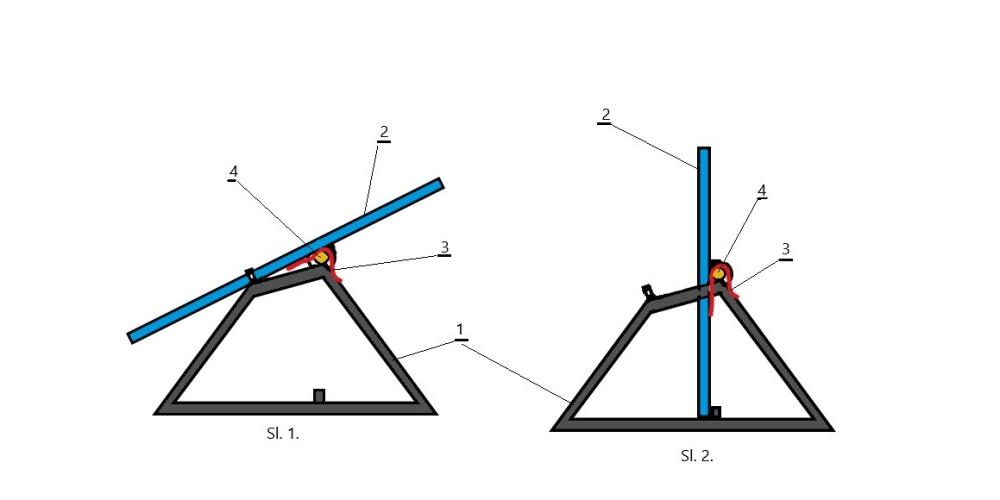
Solar cells produce energy in a quantity that mostly depends on the power of solar radiation, the length of the day, and the surface of the solar cells. The problem is that in cloudy weather the amount of solar radiation decreases, and at night there is no solar energy, so there is no energy either. In winter, an additional problem appears, and that is snow. Snow that falls on the solar cells prevents light from reaching the surface of the solar cells, so there is no energy production.
This problem could be solved very simply, and everything is shown schematically in the pictures above.
It would be enough to place the solar cells (2) on the shaft (4) and firmly connect it to the shaft located on the base (1).
In terms of length, 1/3 of the solar cell (2) should be placed above the shaft (4), while 2/3 of the solar cell should be located below the shaft (4), which can be seen in Fig. 2. Due to this, the solar cell is placed by the force of gravity in the position shown in Fig. 2. A spring (3) is placed on the ends of the shaft (4), which is supported on the base (1) by one end, and lifts the solar cell (2) into an inclined position with the other end, which can be seen in Fig. 1.
When there is no pressure on the solar cell(2), it is placed in an inclined position. But if the solar cell(2) is attacked by snow, then the force of gravity increases, which pushes the lower part of the solar cell(2) down. When enough snow falls, the solar cell (2) rotates around the axis (4) and sets it in the position shown in Fig. 2. which is perpendicular to the ground. Thanks to this, the snow slides off the solar cell (2) and the springs (3) again place the solar cell (2) in the slanted position shown in Fig. 1.
Thanks to this mechanism for gravitational cleaning of solar cells, the amount of energy produced in winter could be much higher than they produce in locations where they are fixed to their base.
Tags
Featured articles